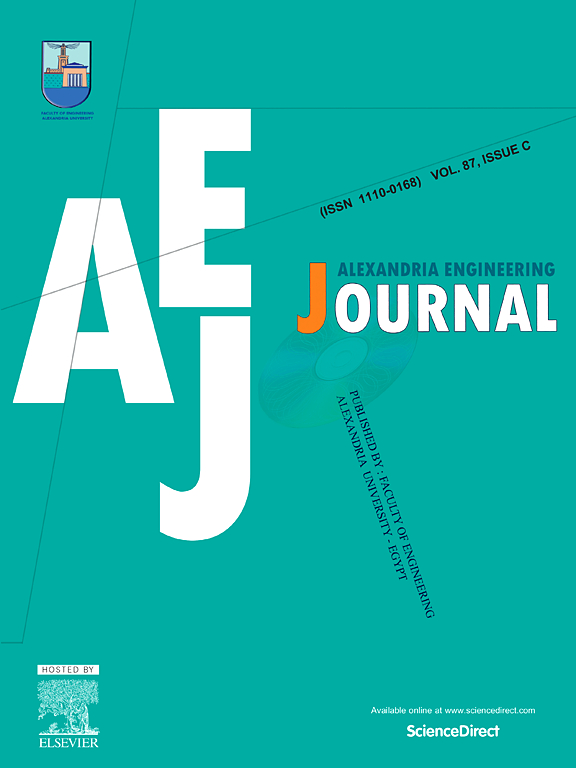区块链辅助改进的基于区间 2 型模糊深度学习的物联网驱动型消费电子产品攻击检测
IF 6.2
2区 工程技术
Q1 ENGINEERING, MULTIDISCIPLINARY
引用次数: 0
摘要
物联网(IoTs)带来了前所未有的个性化和互动性,彻底改变了消费电子产品的格局。互联设备现在可以熟悉用户特征,提供定制技能,提高用户满意度。尽管如此,物联网仍将改变消费电子领域;物联网的安全性变得至关重要,网络攻击者会利用物联网对公共安全构成风险、破坏数据隐私、获取未经授权的访问权限,甚至扰乱运营。强大的安全措施对于维护互联技术扩散和采用过程中的信任、降低这些风险、保护敏感数据以及认证物联网生态系统的完整性至关重要。入侵检测系统(IDS)对物联网安全至关重要,因为它可以动态监控设备行为和网络流量,以检测和缓解任何可能的网络威胁。利用机器学习(ML)方法和异常检测算法,IDS 可以快速识别物联网生态系统中的异常活动、未经授权的访问或恶意行为,从而维护互联设备和网络的完整性,保护敏感数据,防范网络攻击。本研究提出了一种改进的小龙虾优化算法与区间-2 型模糊深度学习(ICOA-IT2FDL)技术,用于物联网基础设施的入侵检测。ICOA-IT2FDL 技术的主要目的是利用超参数调整的改进型深度学习(DL)方法进行入侵检测,从而提高物联网基础设施的安全性。BC 技术可用于实现消费电子产品的安全性。ICOA-IT2FDL 技术采用线性缩放归一化(LSN)方法进行数据归一化。此外,还使用改进的小龙虾优化算法(ICOA)来选择特征。随后是 ICOA-IT2FDL 技术,该技术应用区间-2 型模糊深度信念网络(IT2-FDBN)模型来识别入侵。最后,秃鹰搜索(BES)模型策略提高了入侵识别率。为确保提高 ICOA-IT2FDL 模型的性能,我们进行了一系列研究。实验结果表明,与最近的模型相比,ICOA-IT2FDL 模型的识别效果更好。本文章由计算机程序翻译,如有差异,请以英文原文为准。
Blockchain-assisted improved interval type-2 fuzzy deep learning-based attack detection on internet of things driven consumer electronics
The Internet of Things (IoTs) revolutionizes the consumer electronics landscape by presenting a degree of personalization and interactivity that was previously unimaginable. Interconnected devices are now familiar with user characteristics, giving custom skills that improve the user's satisfaction. Still, IoT remains to transform the consumer electronics field; security in IoT becomes critical, and it is utilized by cyber attackers to pose risks to public safety, compromise data privacy, gain unauthorized access, and even disrupt operations. Robust security measures are crucial for maintaining trust in the proliferation and adoption of interconnected technologies, mitigating those risks, protecting sensitive data, and certifying the integrity of the IoT ecosystem. An intrusion detection system (IDS) is paramount in IoT security, as it dynamically monitors device behaviours and network traffic to detect and mitigate any possible cyber threats. Using machine learning (ML) methods and anomaly detection algorithms, IDS can rapidly identify abnormal activities, unauthorized access, or malicious behaviours within the IoT ecosystem, thus preserving the integrity of interconnected devices and networks, safeguarding sensitive data, and protecting against cyber-attacks. This work presents an Improved Crayfish Optimization Algorithm with Interval Type-2 Fuzzy Deep Learning (ICOA-IT2FDL) technique for Intrusion Detection on IoT infrastructure. The main intention of the ICOA-IT2FDL technique is to utilize a hyperparameter-tuned improved deep learning (DL) method for intrusion detection, thereby improving safety in the IoT infrastructure. BC technology can be used to accomplish security among consumer electronics. The ICOA-IT2FDL technique employs a linear scaling normalization (LSN) approach for data normalization. In addition, features are selected using an improved crayfish optimization algorithm (ICOA). This is followed by the ICOA-IT2FDL technique, which applies the interval type-2 fuzzy deep belief network (IT2-FDBN) model to identify intrusions. Finally, the bald eagle search (BES) model strategy improves the intrusion recognition rate. A series of investigations is accomplished to ensure the enhanced accomplishment of the ICOA-IT2FDL model. The experimentation results specified that the ICOA-IT2FDL model shows better recognition results compared to recent models.
求助全文
通过发布文献求助,成功后即可免费获取论文全文。
去求助
来源期刊

alexandria engineering journal
Engineering-General Engineering
CiteScore
11.20
自引率
4.40%
发文量
1015
审稿时长
43 days
期刊介绍:
Alexandria Engineering Journal is an international journal devoted to publishing high quality papers in the field of engineering and applied science. Alexandria Engineering Journal is cited in the Engineering Information Services (EIS) and the Chemical Abstracts (CA). The papers published in Alexandria Engineering Journal are grouped into five sections, according to the following classification:
• Mechanical, Production, Marine and Textile Engineering
• Electrical Engineering, Computer Science and Nuclear Engineering
• Civil and Architecture Engineering
• Chemical Engineering and Applied Sciences
• Environmental Engineering
 求助内容:
求助内容: 应助结果提醒方式:
应助结果提醒方式:


